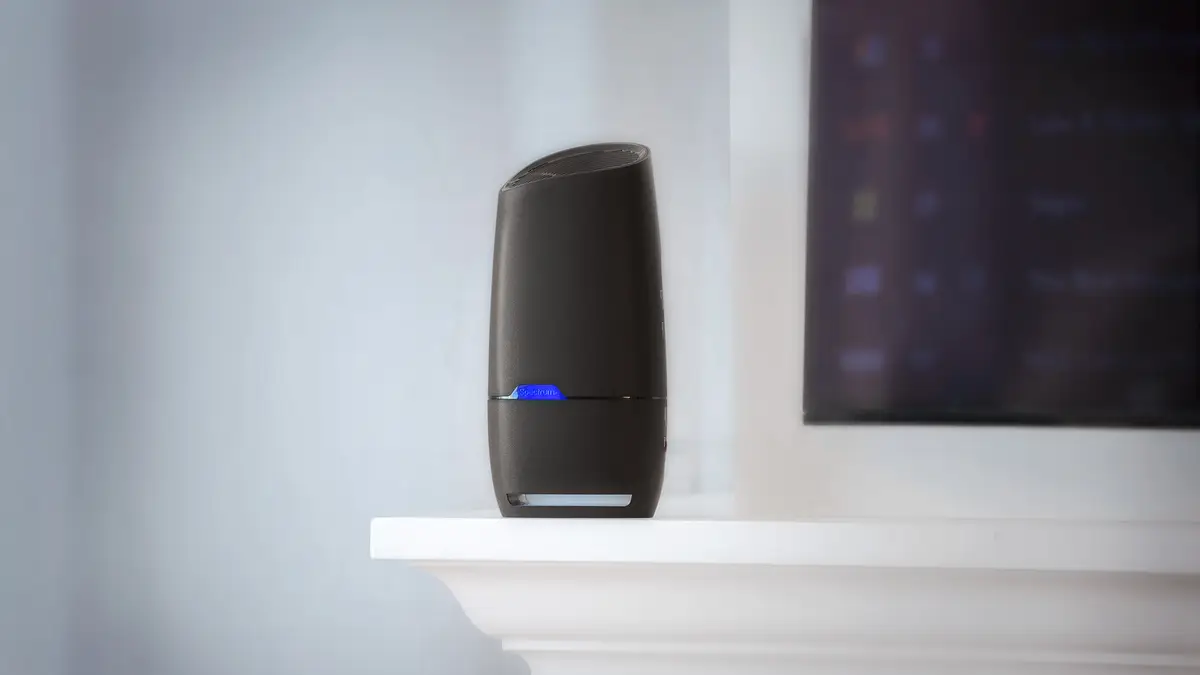
When you sign up for a new internet plan, the provider is all too happy to bundle in their own router under the pretext of a gateway or a modem-router combination. However, it would be foolhardy to fall for all the marketing fluff that may suggest this router is the greatest and best tech on the market today. Another prevalent misconception ISPs often drill in claims the supplied router is proprietary hardware that’s indispensable to the service.
Sure, it is convenient to start strongly with a new connection at home or at work, but this carefully crafted illusion crumbles when you compare the performance, security, and lifetime ownership cost to anything priced similarly at a PC hardware store. Even if the ISP’s router matches the specs for a store-bought one worth the monthly rent, you’ll walk home with a better kit that offers more personalization and control. It’s a win-win, and here are nine solid reasons to drive the point home.
You’re not renting, you’re overpaying
Consider the ownership cost
From the get-go, ISPs tend to milk customers for cash with a steep upfront price for the supposedly mandatory router, or tie you in to a subscription service that bleeds you dry instead. The small charge of $10 or $15 on your bill every month adds up quickly. Even a $12 monthly fee adds up to $144 a year. In two years, you will have paid nearly $300 for a router that was probably mediocre to begin with and is now woefully outdated.
For that same $300 or less, the networking aftermarket has plenty of choices. You might argue that you’ll someday surrender the broadband connection and the ISP router will go away with it too. Even if you move houses frequently, your own router makes sense from a cost standpoint, and the familiarity of setting it up quickly in a new location. The router rental model is a fantastic deal for the ISP, since they make their money back on the hardware many times over. Put the money down once, and you’ll settle with better gear for a lower lifetime ownership cost.
Too many devices, not enough power
Caps on everything
Take a quick census of the devices connected to your Wi-Fi right now. You’ve probably got phones, laptops, a smart TV, maybe a gaming console, a few smart speakers, and perhaps some smart lights or a thermostat. The modern home is a bustling digital ecosystem, and the cheap, underpowered routers ISPs hand out are simply not built for it. They don’t have enough logic under the hood to switch client device priorities as quickly as your network load varies.
That’s why your connection could feel sluggish with multiple devices performing bandwidth-intensive tasks on the same router, such as streaming video. A good aftermarket router, especially a modern Wi-Fi 6 or Wi-Fi 7 model, is designed for this high-density environment and complicated smart home setups. They can juggle hundreds of connected clients without breaking a sweat, ensuring every gadget gets the bandwidth it needs.
Older Wi-Fi standards
Keeping up with the times
Technology moves fast, but you wouldn’t know it from looking at the hardware your ISP provides. They are notorious for distributing routers running on older Wi-Fi standards like Wi-Fi 5 (802.11ac) or, even worse, Wi-Fi 4 (802.11n). Meanwhile, the tech world has moved on to Wi-Fi 6 (802.11ax), Wi-Fi 6E, and is now rolling out Wi-Fi 7. The ISPs are often stuck with this older hardware since they purchase and hoard router inventory every few years, replenishing it only once it’s fully consumed, sometimes with more of the same old router.
You could say your gigabit connection will be just fine on a Wi-Fi 5 router from a couple of years ago since the theoretical throughput cap sits at 3.5 Gbps. Sadly, real-world speeds are much lower, and newer standards come with more than just higher throughput capabilities. For instance, Wi-Fi 6 introduced OFDMA (Orthogonal Frequency Division Multiple Access) tech that allows routers to ping multiple devices simultaneously, rather than an handling a request queue. This reduces latency, but your older ISP-issued router denies you these features.
Limited to the basic settings
A walled garden
My biggest concern with these bundled routers is the limited settings page with few options besides changing your Wi-Fi network SSID (network name broadcast to clients) and its password. Unfortunately, this is rather intentional since ISPs don’t want to bother users with settings that could complicate the remote troubleshooting experience. Such simplicity is a detriment to power users who know what they are doing, and need access to everything from network band selection to UPNP for remote access.
Aftermarket routers are the polar opposite, with fully configurable settings for Quality of Service (QoS), custom DNS, VPN, and per-device parental controls. Your ISP may be actively gatekeeping these settings that can make your LAN safer and personalized.
The ISP always has a backdoor
For troubleshooting, they say
Most ISPs insisting on a proprietary or bundled router threaten limited customer support options if you’re using a store-bought router. Depending on local laws, this may be partly true and ISPs may refuse to tinker with your third-party router to limit liability. On their own routers, they usually configure the TR-069 (CPE WAN Management Protocol) to configure, update, and troubleshoot your network remotely. It may be a convenience for customers and providers alike, but it’s still a backdoor.
It lets the ISP, or any other user, see the devices connected, change settings arbitrarily, and potentially monitor your activity. For anyone who values their privacy, this protocol makes a replacement router indispensable, since there won’t be a hidden management protocol welcoming strangers onto your network.
It’s always the default credentials
A price for convenience
With the commitment to remote diagnosis comes bondage to default credentials that support technicians need for administrator-level access. While the Wi-Fi password is often unique, the admin username and password are frequently default combinations. You could change them, but most users don’t bother, leaving a glaring security loophole, especially if you have open ports.
If bad actors gain access, they can change your DNS settings to redirect you to phishing sites, monitor your traffic, or use your network to launch attacks on others. Aftermarket routers have largely solved this by forcing you to set a unique, strong admin password during the initial setup process, a simple step that drastically improves your security.
Like Wi-Fi versions, but more important
Just like Wi-Fi standards, security protocols also evolve. The gold standard today is WPA3, which offers significant improvements over its predecessor, WPA2. It is more resilient to brute-force attacks trying to crack your Wi-Fi password, and naturally makes networks running the older standard more lucrative propositions.
ISPs seldom update the router models distributed to customers because new SKUs introduce new nuances for support techs, and there’s little financial incentive to disturb the status quo. Moreover, they control firmware updates to your router, so they are often slow to adopt security changes too. Top-tier router manufacturers, on the other hand, compete on features and security, so they are much quicker to implement standards like WPA3, giving you peace of mind that the latest and greatest encryption protects your network.
Guest networks don’t exist
Another lost comfort
You probably don’t want friends and other visitors connecting to your home Wi-Fi that’s used to manage your NAS, security cameras, and smart home controls. The solution is a guest Wi-Fi network that’s separate and isolated for visitors, with its own bandwidth cap and limit on connected devices. Today, this is a standard feature on practically every router, but is still a toss-up on ISP-issued hardware.
Basic models lack support entirely, while the newer ones may just pack in a basic toggle switch. With your own router, you can easily set up a guest network, give it its own name and password, and ensure your home LAN stays undisturbed.
If they’re ever pushed out
As I alluded to earlier, ISPs often control firmware updates for their routers, even if the hardware is white-labeled and produced by a specialized brand. Like the OS on your PC, these updates contain critical vulnerability patches, and are integral to the security of your network. But if you have an ISP router, you’re not getting that update from the manufacturer. You’re waiting for your ISP to test, approve, and finally push the update to your device. This process can take months, or in some cases, it never happens at all.
This leaves your home Wi-Fi and all the devices connected to it exposed to known exploits long after a fix is available. When you own your router, you get updates directly from the company that made it (like ASUS, TP-Link, or Netgear), ensuring your network’s first line of defense is always up-to-date.
The ISP’s router isn’t a steaming heap of junk for everyone
All things considered, it’s easy to jump to a conclusion that the router your ISP provides is nothing more than future e-waste. For a power user, that’s largely true. However, it’s not entirely useless. For someone with a small apartment, very few devices, and zero interest in network management, the ISP-provided box is a simple, plug-and-play solution. If something goes wrong, they can call a helpline and let the service provider troubleshoot everything.
Simplicity brings peace of mind, but to unlock the full potential of your network, an oversimplified solution like this is more like a shackle. Investing in a good aftermarket router gives you the features, performance, and security that your internet plan deserves. I certainly regret sticking with my ISP’s router for as long as I did.



